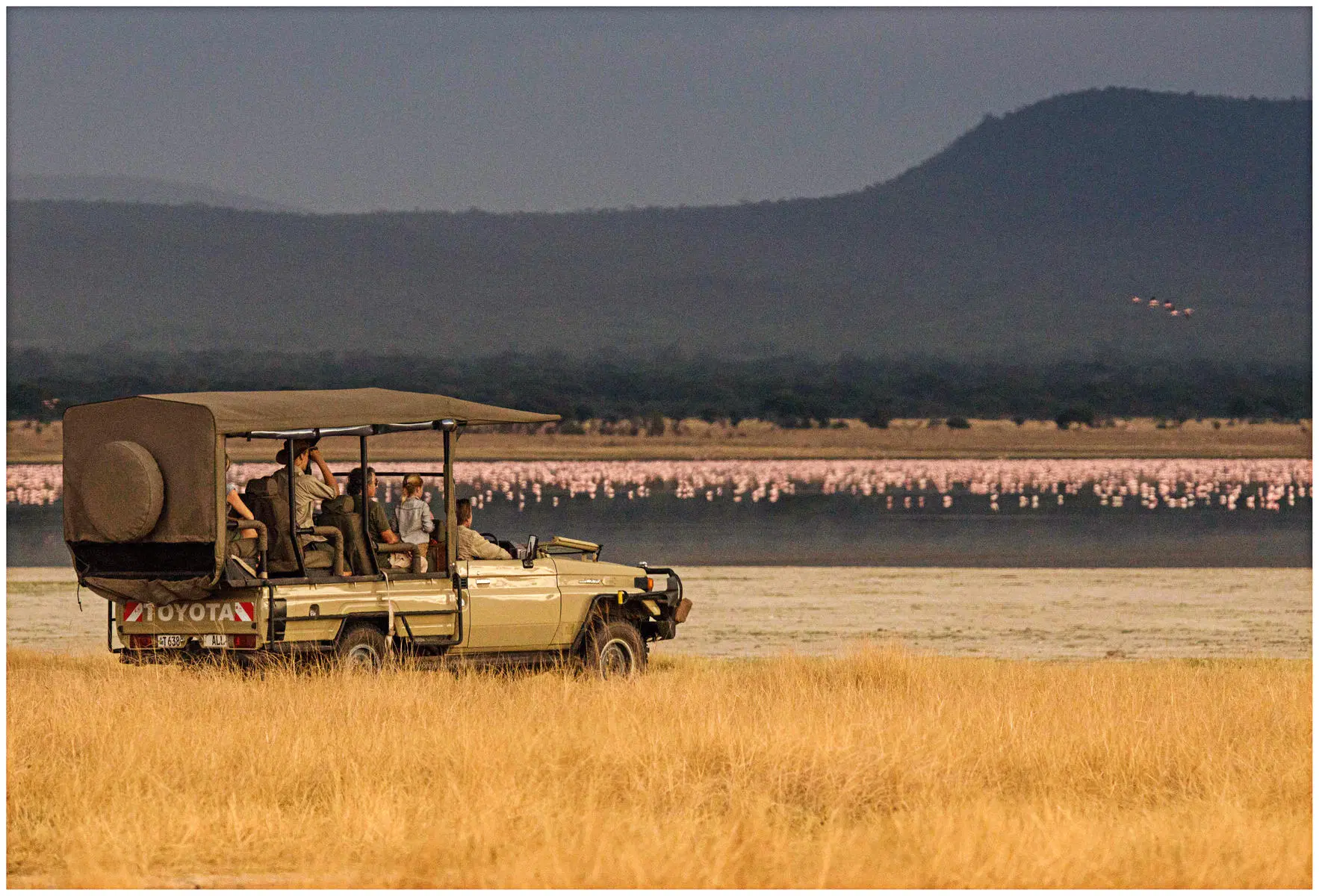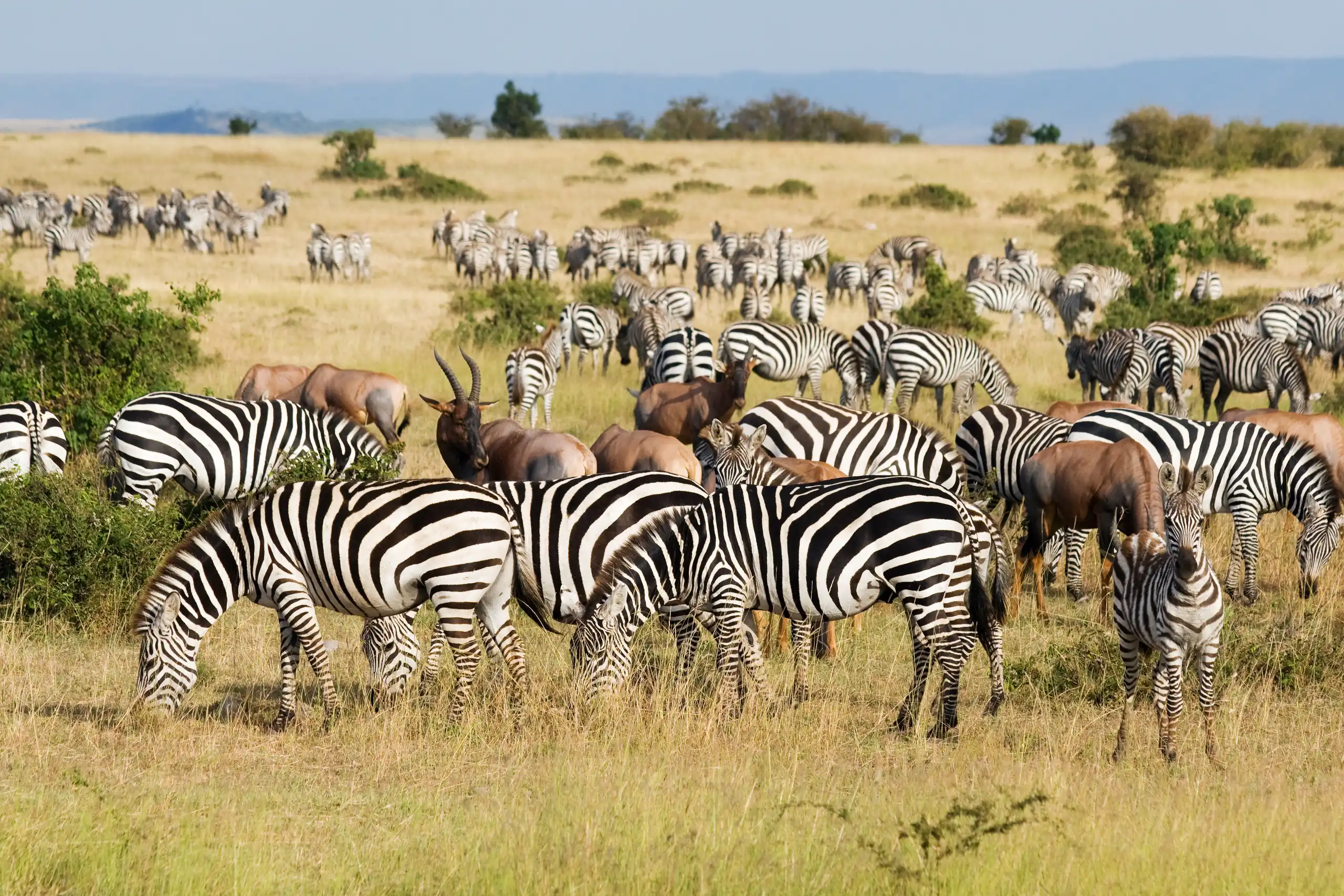Table of Contents
ToggleWhen is the best time to visit Serengeti National Park? That is a question that I get asked a lot and I must say, it is a hard one to answer. In truth, I think any time is a great time to visit Serengeti as this is one of the most epic destinations in the world and its wildlife density offers a superb safari experience no matter what time of the year you visit.
In Serengeti National Park, temperatures remain steady month-to-month, with average lows of about 150C and highs of about 27 0C.
This Tanzania safari park also has open savannah plains, the climate is mild, and the vegetation is never to dense to see animals.
However, if you are looking for the optimal wildlife game viewing conditions, the best time to visit Serengeti National Park is from January to February and June to October. It is also the best time to go to Serengeti and Zanzibar for a beach and bush experience.
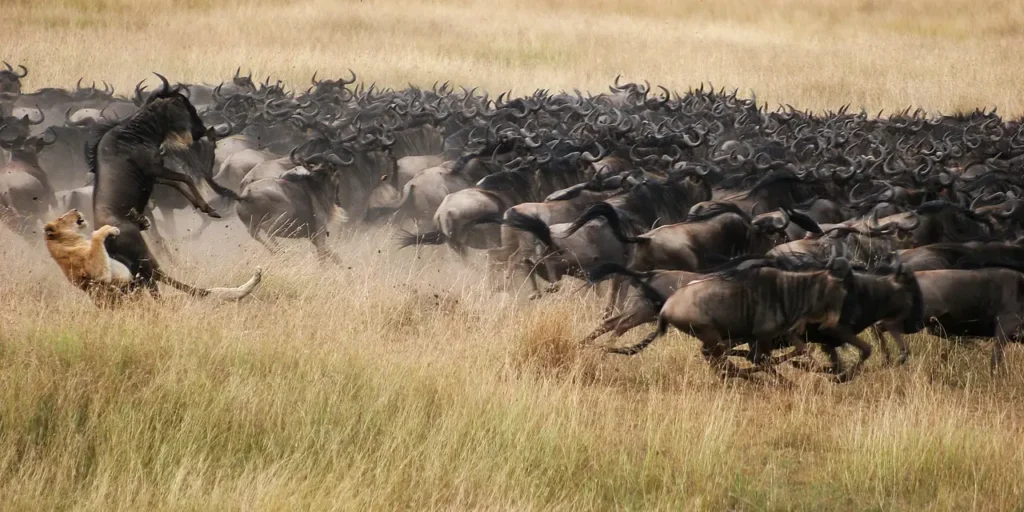
Serengeti National Park by Month
Here are the true facts – including my best insider tips – on visiting Tanzania’s Serengeti National Park in each month.
1. January
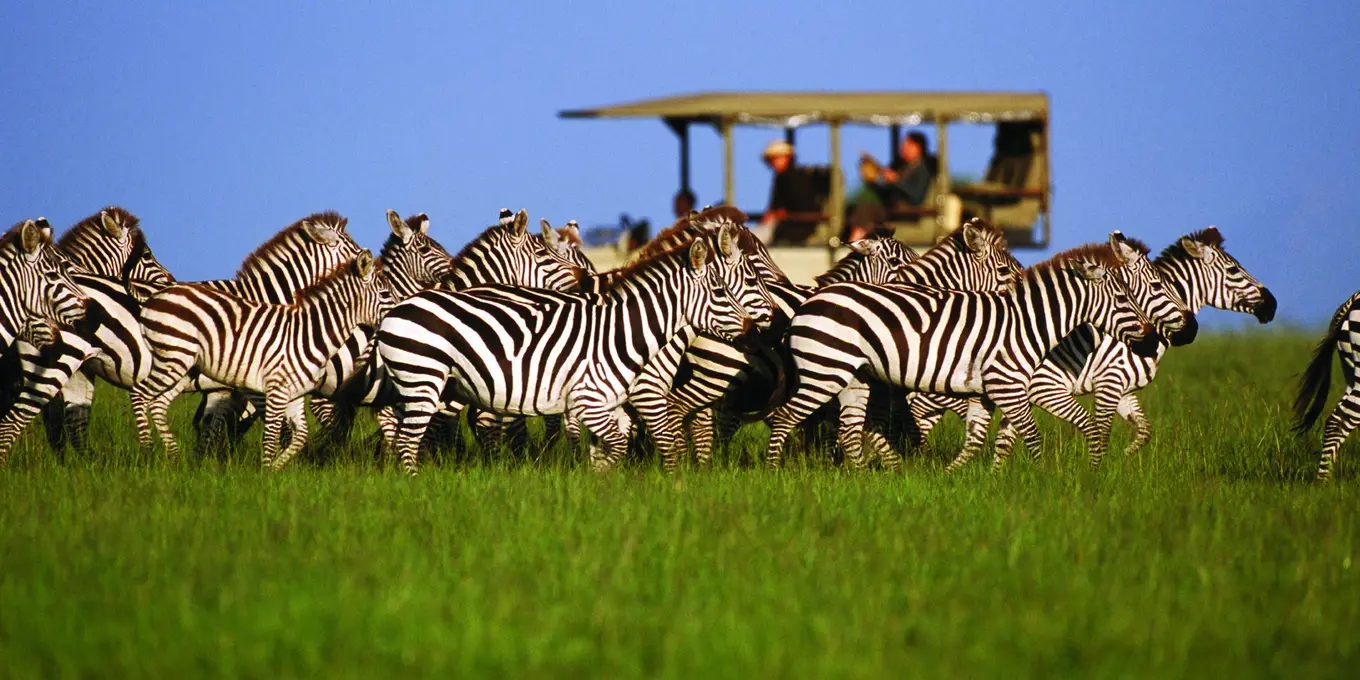
January marks the beginning of the green season in Serengeti. This is when the Serengeti plains are a beautiful shade of green, dust levels are minimal and most wildlife species are easier to see. January is also one of the warmest months but the weather is still ideal for wildlife viewing. The famous migration is concentrated in massive numbers on the Serengeti plains (Ndutu Plains area), which in turn attracts large numbers of predators.
January is the time of plenty and many animals time the birth of their families to coincide with the green season. Occasional showers can be expected in January.
These expected sporadic showers do not usually pose much of an inconvenience while game driving. If it does rain, it will usually clear in 1-2 hours. However, the western and northern parts of the Serengeti receive a much greater amount (2-3 times more) of participation as compared to the southern and eastern Serengeti.
The wetter western and northern Serengeti areas are affected by Lake Victoria. This means that in the southern Serengeti where you should ideally focus your January safari, the rains should not be an issue and it will rain substantially less than the other areas of the Serengeti.
2. February

February is one of the most popular months for safaris in Serengeti and marks the middle of the green season. The Serengeti plains are lush shade of emerald, there is hardly any dust, and the game viewing is excellent. A safari to Serengeti during this time offers an excellent opportunity to witness the spectacular sight of wildebeest calving season of the Great Migration – one of the seven wonders of the natural world.
In the vast southern Serengeti plains near Ndutu area, around half a million wildebeests are born within 2 to 3 weeks, with as many as 8,000 of them born in a single day.
While it is certainly an adorable and tender sight to witness, it is essential to remember that this also means that opportunistic predators are always lurking, looking for a way to make a meal of the vulnerable and weak wildebeest calves.
Although these little ones are champions at getting up and running with the herds within minutes of being born, they are still at risk of being preyed upon. These situations are a photographer’s dream, making this time of year incredibly special.
3. March
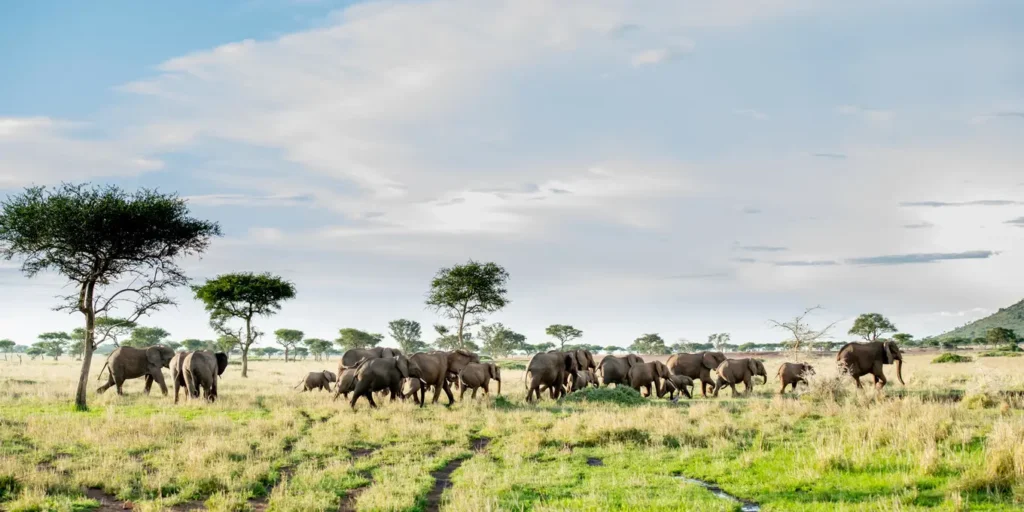
March is situated towards the end of the green season as the ‘long rains’ begin.
The Serengeti National Park enters a period of low season when visitor number drop off and the migrating animal herds start to leave the Ndutu area in the southern region of the park and move to the west. The humidity rises during March, but this is the best time to visit Serengeti for great rates on accommodation.
However, in late March, there is risk of heavier rain, which may pose an inconvenience while game driving. This risk is alleviated by the fact that it tends to rain less on the southern Serengeti plains where the best game viewing is located during March.
We suggest that you choose longer duration safaris during late March. We view the extra night or two as insurance against the potential of sour weather having a negative impact on any one day.
4. April
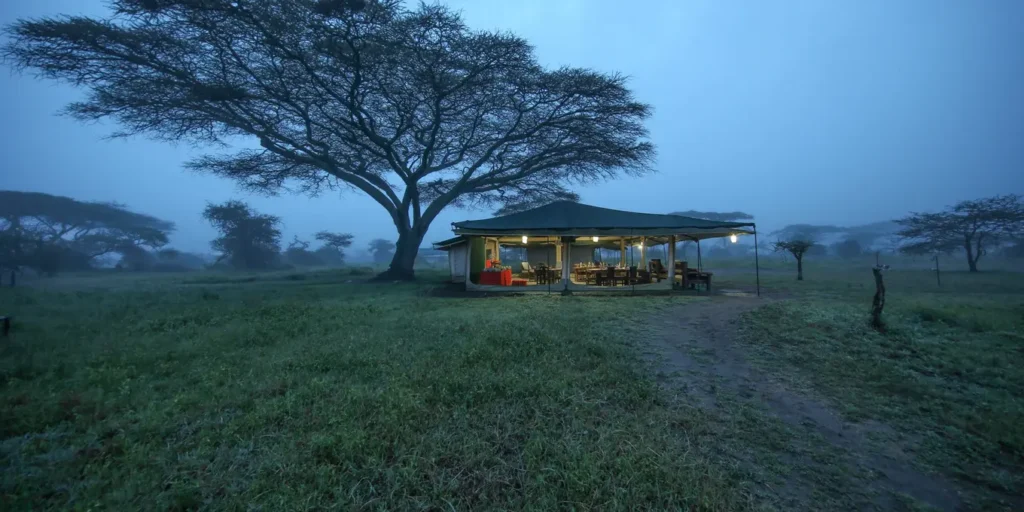
Around April, Serengeti National Park starts to see fewer visitors, mostly due to the humidity and wet weather during the month. It is not generally the best time to visit the Serengeti National Park. But if you are a safari enthusiast, April can be an ideal time to get off the beaten path and explore the remote corners of the park.
5. May
The beginning of May sees very heavy rainfall and the camp and lodges in Serengeti National Park are relatively quiet.
This is not the best time to visit the Serengeti for a safari unless you make your way to the central and western regions of the park to follow the Great Migration. Towards the end of May, the weather usually begins to clear and the park begin its season of change.
6. June
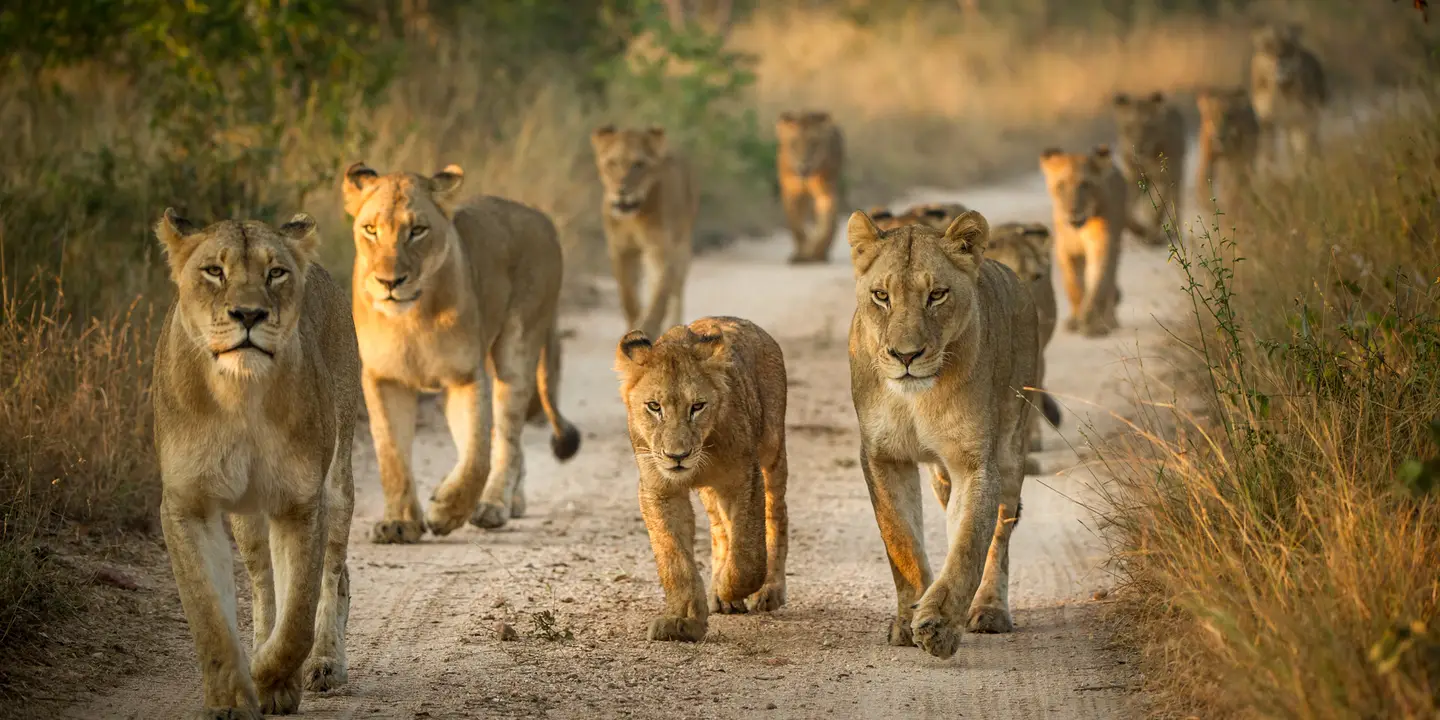
June marks the beginning of the dry season in Serengeti National Park and the start of the northward migration wildebeest season. Dry conditions prevail and the occasional afternoon or evening thundershower is a welcome relief.
Wildlife viewing can be tremendous in June when the migration is on the move and the great herds pour though the Central and Westerns regions of the Serengeti.
Visitor numbers are still low in the beginning of June which makes it the best time to visit Serengeti just before the peak safari season. But the number of visitors begin to rise moderately high at the end of June.
7. July
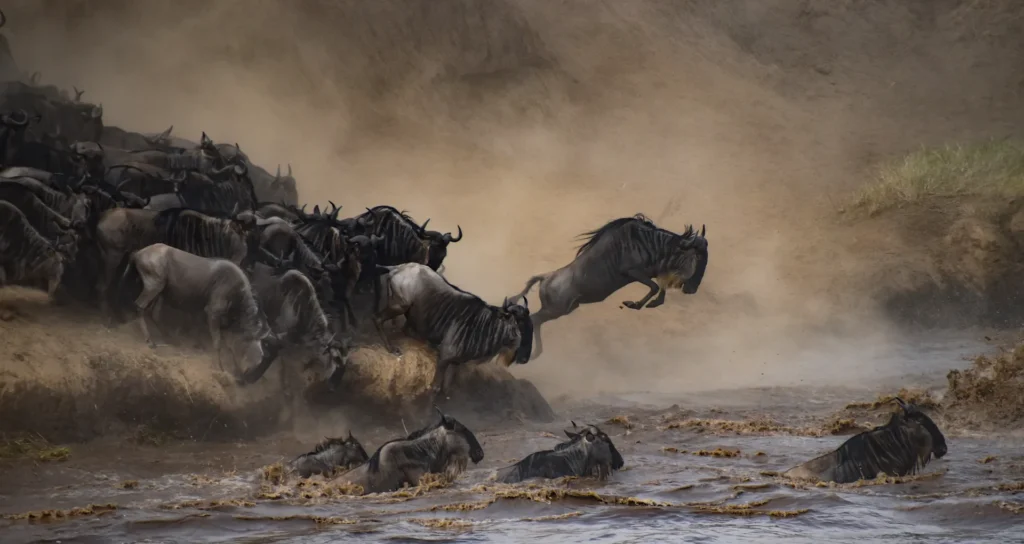
The dry season month of July is great time to plan a safari in Serengeti. And many visitors flock to the park to witness the Great Migration, as it will be surging through the pristine Northern Serengeti. This is also the time of the famous Mara river crossing.
The sheer volumes of wildebeest and zebra is a wonder in itself, with 1.5 million wildebeest and 500,000 zebra taking part in the largest terrestrial movement of animals on the planet— so large in fact, that it can be seen from space.
The dramatic river crossings are exhilarating to watch, but patience is needed to witness this spectacle first-hand. Wildebeest can take hours, to full days to cross the river. The herd eagerly waits for one of their comrades to take the first step – literally.
However, it is quite a scary prospect going first, there are predators to watch out for, with monstrous crocodiles in the river and lion and other big cat waiting on the other side of the river to pick off the weaker of the herd.
There is the muddy riverbed to navigate, making sure they don’t get stuck and some sides of the ravine turn out to be too steep to climb up — forcing the herd back across the treacherous river to start the exercise all over again!
In the end, one brave wildebeest takes their first step or rather jump into the river, causing a cascading movement of the whole herd — one following the other in a simultaneous effect — a definite must-see event. In fact, there are more safari vehicles in the Serengeti National Park during this period than any time of the year.
8. August
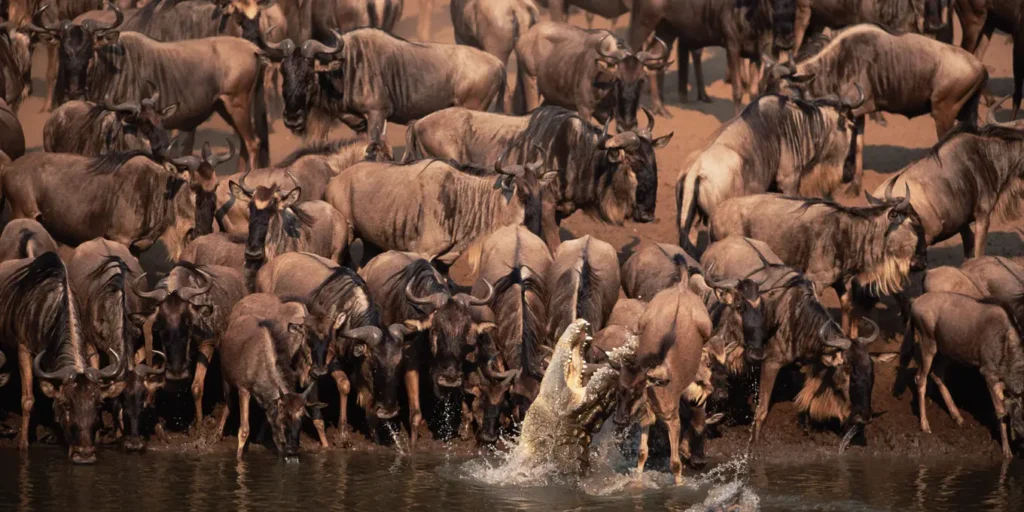
August is also peak season and generally considered the best time to witness the dramatic river crossings from the northern Serengeti National Park into the Masai Mara.
This is the best time to visit Serengeti for thrilling wildlife encounters as the herds are easier to spot and there are many predators around. You will see some of Africa’s big cats (Cheetahs, Lions, and Leopards) on the hunt!
You may also like; best time to visit Masai Mara
9. September
September is still very busy with visitors on a safari in the Serengeti, particularly on the Kenyan and Tanzania borders as the herds of animals travel over the Mara River in smaller batches. The southern parts of Serengeti are quieter during September.
10. October
By October the plains of Serengeti National Park are mostly parched, but the dry season is now coming to an end. Although the Migratory herds have made their way into Kenya, wildlife game viewing in the Serengeti is still nothing short of spectacular.
11. November

November marks the end of the dry season in Serengeti National Park and the start of the southward migration season. During this time, great herds stream through the woodlands and flood onto the plains as stunning thunderclouds form in anticipation of the approaching green season. It is an amazing spectacle to see thousands of wildebeest, zebra and gazelle thundering southwards with lion, cheetah and spotted hyena in close pursuit.
Occasional showers can be expected in November. In late November, towering thunderclouds form and herald the onset of the green season and it is a perfect time to take advantage of lower rates.
12. December

The rains continue and the scenery changes from dry dusty plains to rolling grasslands. The cycle of the Great Migration in the Serengeti continues in December.
The migrating herds make their way to the southern plains of the Ndutu region where they prepare for the breeding season. The temperatures and the humidity begin to rise for the wet summer months. The festive season can be very busy, so it’s advisable to book your accommodation well in advance.
Other FAQs About When to Visit Serengeti
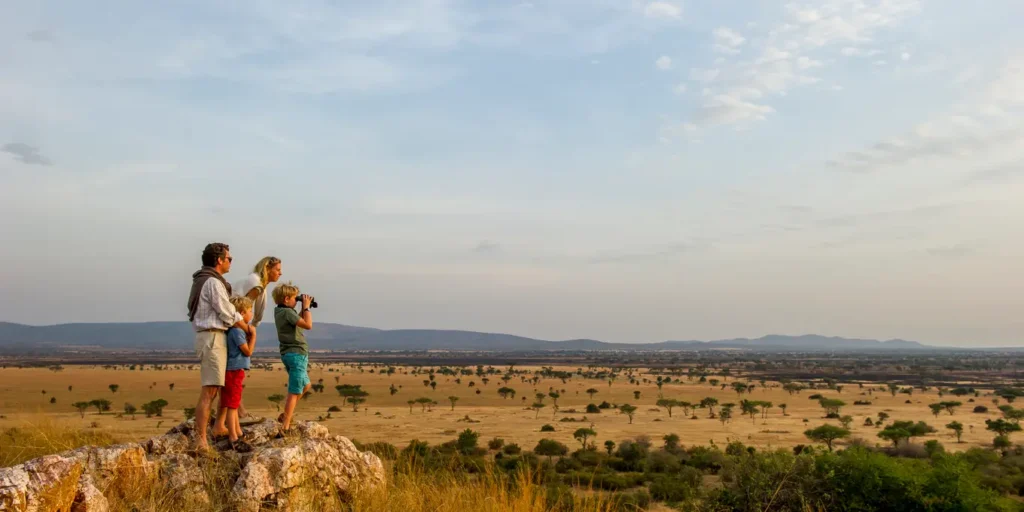
1. What month is the Serengeti migration?
The migration through the Serengeti follows a reasonably predictable annual cycle, but there is also variation from one year to the next, dependent mainly on rainfall.
July to August is the prime wildlife safari season. These months mark the annual migration of wildebeest from Serengeti across Mara River to Masai Mara as they make their epic river crossings – an exciting safari experience sure to tick off your bucket list!
2. best time to visit Serengeti and Zanzibar
Serengeti and the Indian Ocean island of Zanzibar are stunning destinations. Visiting both provides a wonderful experience of the best that Tanzania has to offer.
The best time for safari in Serengeti is the dry season months of January, February, June, July, August, September and October. Zanzibar is very much a year-round destination: it’s always warm enough to go to the beach.
That said, the best weather in Zanzibar is usually from June or July until October, while the rainiest months are April and to a lesser extent March and May.
3. How many days is enough for Serengeti?
Serengeti is a massive safari park that spreads out over14,763 square kilometers.
The very name of the national park alludes to its grand scale: the word “Serengeti” is an approximation of the word siringet used by the Maasai, which means “ endless plains” or “the place where the land runs on forever.” That said, a minimum of four days is the ideal number of days for sufficiently exploring the Serengeti and its wildlife.
As it is so extensive, you’ll need this time to spend driving around with your guide in your safari vehicle, looking for the Big Five and other animals.
The Bottom Line
To some extent, the best time to visit Serengeti depends on your interests, whether it is the calving seasons, the river crossings, or the tranquility and exclusivity of the less busy seasons. Each season in the Serengeti offers a unique and memorable safari experience.

